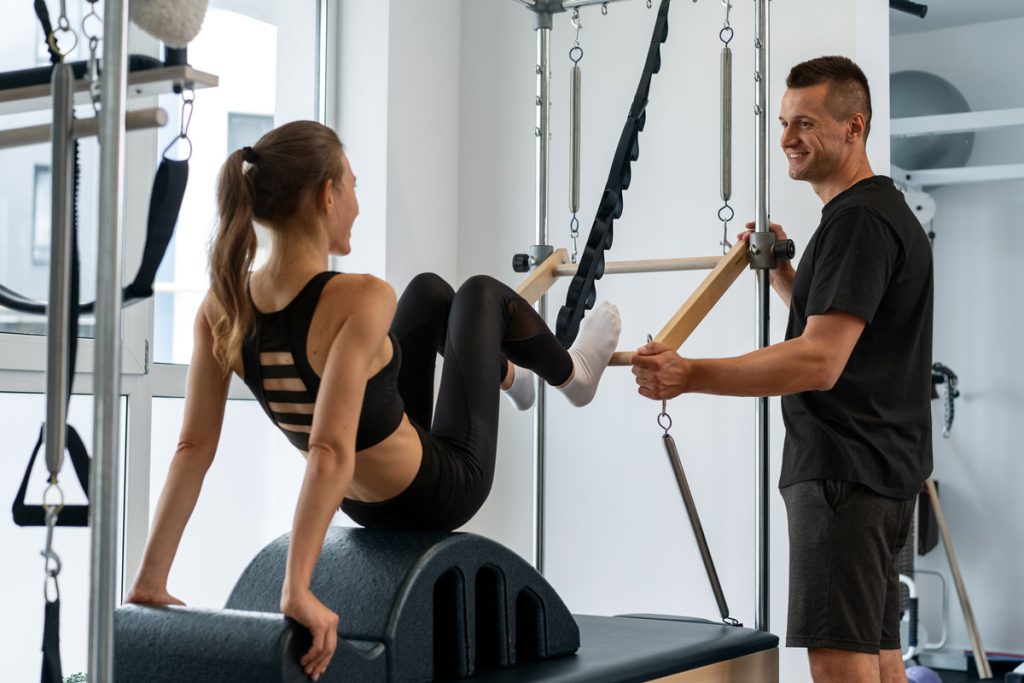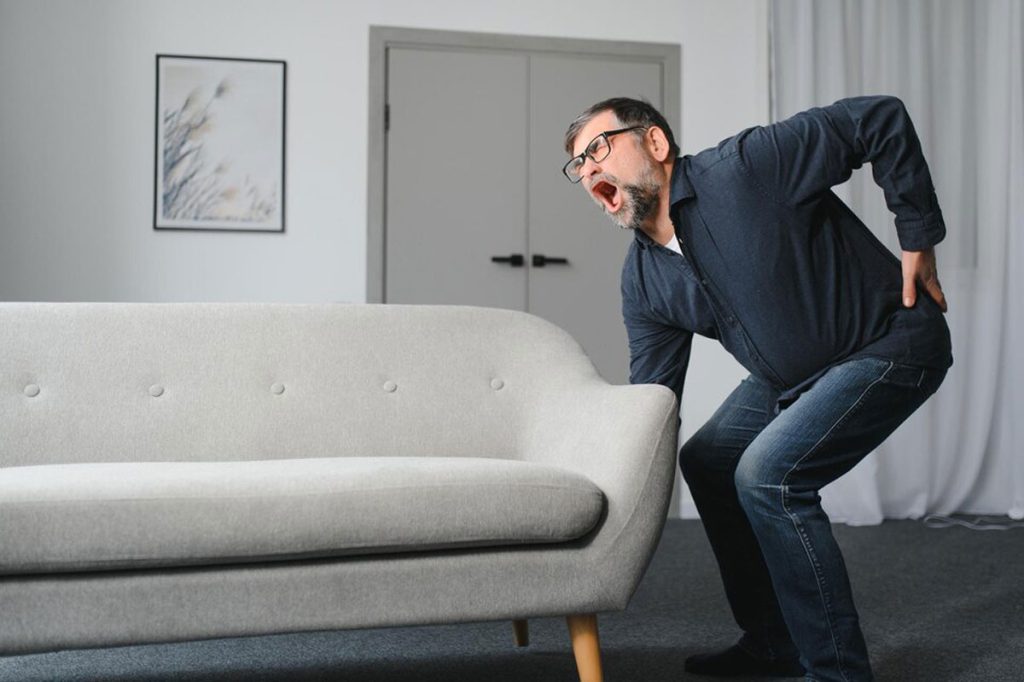In a world pulsating with fitness trends, Pilates stands tall as a timeless beacon of holistic health. Beyond mere physical exercise, it’s a symphony that harmonizes the body and mind, orchestrating a chorus of strength, flexibility, and inner tranquility. Step into the realm of Pilates, where each deliberate movement unfurls a bouquet of benefits, transforming not just muscles, but entire lifestyles. Amidst the bustle of modern life, Pilates emerges as a sanctuary—a haven where wellness is more than just a goal; it’s a journey toward balance, vitality, and a rejuvenated spirit.
Amidst the myriad workout routines, Pilates emerges as a breath of fresh air—a sanctuary for those seeking not just physical prowess but a deeper, more holistic approach to wellness. It’s an art form that marries grace and power, sculpting bodies while nurturing a profound connection between body and mind. Explore the dimensions of Pilates as we uncover its multifaceted benefits, guiding you through a transformative experience that transcends the boundaries of a mere fitness regimen.
Table of Contents

The Most Important Benefits of Pilates:
- Improves Posture: Pilates focuses on alignment and balanced muscle development. Regular practice helps in correcting postural imbalances, leading to better posture and reduced risk of injury.
- Alleviates Lower Back Pain: Pilates strengthens the core muscles, providing better support for the lower back. This can lead to significant relief from chronic lower back pain.
- Increases Flexibility: By stretching the muscles and increasing the range of motion in joints, Pilates enhances flexibility, reducing the risk of injuries and improving overall physical performance.
- Core Strength: Core strengthening is a fundamental aspect of Pilates. A strong core enhances overall body strength, stability, and ensures a healthy back.
- Increases Mobility: Pilates exercises promote fluid and graceful movements, increasing joint mobility and muscle elasticity.
- Reduces Stress: The mind-body connection in Pilates helps in stress management. Its focus on breathing and mindfulness can lead to a calmer, more relaxed state.
Are Pilates Actually Effective?
Are Pilates Actually Effective?
When discussing the efficacy of any fitness regimen, it’s vital to consider tangible, observable outcomes. This leads us to the compelling query: Are Pilates actually effective? To answer this, let’s delve into the numerous benefits of Pilates, a discipline that has stood the test of time and continues to thrive in the wellness community.
Firstly, the core philosophy of Pilates involves the harmonious integration of mind and body, a concept that extends beyond mere physical exercise. This holistic approach ensures that the benefits of Pilates are not just felt physically, but mentally and emotionally as well. It’s not simply about building muscle or increasing endurance; it’s about enhancing overall well-being.
One of the most celebrated benefits of Pilates is its remarkable impact on core strength. A strong core is fundamental not only for physical fitness but also for preventing injuries, maintaining good posture, and enhancing athletic performance. Pilates exercises are designed to deepen this core strength, ensuring each movement stems from this central powerhouse.
Moreover, Pilates is renowned for its ability to improve flexibility. Through its range of movements and stretches, it gradually increases the length and elasticity of muscles, as well as the mobility of the joints. This leads to a decreased risk of injuries and an overall feeling of physical lightness and ease.
Another key aspect is its role in rehabilitation and prevention of injuries. Pilates’ low-impact nature and focus on controlled movements make it an ideal choice for those recovering from injuries or looking to prevent them. By strengthening the stabilizer muscles, Pilates provides a solid foundation for any kind of movement and physical activity.
Beyond the physical, the benefits of Pilates include stress reduction and mental clarity. The practice emphasizes controlled breathing and mindfulness, encouraging a state of mental calmness and focus. This mindfulness aspect is not just a byproduct but a core element of Pilates, making it a holistic practice for both body and mind.
In conclusion, the effectiveness of Pilates is multifaceted. Whether it’s improving physical strength and flexibility, aiding in injury recovery and prevention, or contributing to mental wellness, the benefits of Pilates are comprehensive and well-documented. Its continued popularity and the loyalty of its practitioners are testaments to its effectiveness and the diverse benefits it offers to individuals of all fitness levels.

Can Pilates Help You Lose Weight?
While Pilates alone may not be the fastest way to lose weight, it effectively complements a weight loss regimen by toning the body and enhancing muscle mass, which can boost metabolism. To lose weight with Pilates, consistency and a balanced diet are key.
How Often Should I Do Pilates to Lose Weight?
When it comes to leveraging the benefits of Pilates for weight loss, frequency and consistency are key. While the specific needs can vary from person to person, a general recommendation for those aiming to shed pounds is to engage in Pilates exercises 3-4 times per week. This regularity is crucial for stimulating and maintaining a higher metabolic rate, a core element of weight loss. Each session of Pilates not only burns calories but also enhances muscle tone and boosts overall metabolic health, contributing to more efficient fat burning even when at rest. Remember, the benefits of Pilates extend beyond the scale; they also include improved posture, increased muscle strength, and enhanced mental well-being, all of which are essential components of a healthy weight loss journey. By maintaining a consistent Pilates schedule, you’re not just working towards a slimmer figure, but also embracing a holistic approach to health and fitness.
Is 30 Minutes of Pilates a Day Enough to Lose Weight?
Engaging in 30 minutes of Pilates a day can indeed be a potent catalyst in a weight loss journey, thanks to the multifaceted benefits of Pilates. This duration strikes a balance between feasibility and efficacy, making it a practical choice for those with busy schedules. During a 30-minute session, Pilates targets various muscle groups, enhancing muscle tone and increasing metabolic rate, both of which are crucial for burning calories more efficiently. Moreover, the holistic nature of Pilates, which focuses not just on physical health but also on mental well-being, contributes to better stress management and mindful eating habits. Although the primary focus of Pilates isn’t rapid weight loss but rather building strength, improving posture, and enhancing flexibility, these 30-minute daily sessions can significantly contribute to a leaner and healthier body when combined with a balanced diet and other healthy lifestyle choices.
Is reformer Pilates good for weight loss?
Reformer Pilates, with its specialized equipment and dynamic exercise routines, is indeed an excellent choice for those targeting weight loss, capitalizing on the unique benefits of Pilates. The reformer machine adds resistance to Pilates exercises, intensifying the workout and leading to increased calorie burn and muscle toning. This heightened intensity means that reformer Pilates not only aids in shedding excess weight but also significantly improves muscle strength and endurance. The versatility of the reformer allows for a wide range of exercises, ensuring a full-body workout that addresses various muscle groups. Consequently, the metabolic rate is enhanced, not just during the exercise but also long after the session is over. The holistic approach of reformer Pilates, which combines strength, flexibility, and balance, contributes to a more efficient and sustainable weight loss journey, making it a valuable addition to your fitness regimen.

Can Pilates Build Muscle?
Absolutely! Pilates is effective in building lean muscle mass and enhancing muscle endurance without adding bulk.
Can I gain muscle with Pilates?
Absolutely, gaining muscle is one of the key benefits of Pilates. This form of exercise, renowned for its focus on core strength, also works various muscle groups throughout the body in a balanced and effective manner. Pilates employs controlled, precise movements that target both the larger muscle groups and the smaller, often-neglected stabilizing muscles. This comprehensive muscle engagement leads to an increase in overall muscle tone and strength. Moreover, the resistance element in many Pilates exercises, whether using one’s own body weight or equipment like bands and reformers, further aids in muscle development. While Pilates might not build muscle in the same way as heavy weightlifting, it effectively creates a leaner, toned, and balanced muscular structure, making it a highly beneficial workout for those looking to enhance muscle strength and definition.
Is Pilates as good as lifting weights?
Comparing Pilates to weightlifting is like comparing two different languages in the world of fitness; both are effective but serve unique purposes, each with its own set of benefits. Pilates, known for its emphasis on core strength, flexibility, and mind-body connection, offers a different approach to muscle toning and strengthening. It focuses on controlled movements that enhance muscle endurance and postural alignment without adding bulk, making it ideal for those seeking a leaner, more toned physique. On the other hand, weightlifting primarily aims at increasing muscle mass and strength through progressive overload. While Pilates may not replace the high-intensity muscle-building benefits of heavy weightlifting, it complements it by improving flexibility, balance, and muscle control. This makes Pilates a valuable part of a well-rounded fitness regimen, particularly for those looking to enhance overall body awareness and functional strength. The benefits of Pilates, therefore, extend beyond muscle conditioning to encompass a holistic approach to physical well-being.
How long does it take to build muscle with Pilates?
The timeline for building muscle with Pilates, while varying from person to person, generally reflects the consistent and holistic approach inherent in this exercise form. On average, practitioners may start to notice improvements in muscle tone and strength within 8 to 12 weeks of regular Pilates workouts. This timeframe can be influenced by factors such as the frequency of workouts, the individual’s initial fitness level, and their overall lifestyle. Pilates, known for its low-impact but highly effective exercises, targets both the major muscle groups and the smaller, stabilizing muscles that are often overlooked in other workouts. One of the key benefits of Pilates is its ability to create a balanced and toned physique, enhancing muscle endurance and functional strength without adding bulk. Therefore, while the process of building muscle might be more gradual compared to high-intensity strength training, the results are well-rounded, contributing to a leaner, stronger, and more flexible body.

Can Pilates Tone Your Body?
Pilates is exceptional for body toning. It targets multiple muscle groups, leading to a more defined and sculpted physique.
Can Pilates change your body shape?
One of the most celebrated benefits of Pilates is its ability to significantly change and improve your body shape. This transformation occurs through the development of lean muscle mass, enhancement of posture, and the overall toning and tightening of the body. Pilates focuses on the core, but it also targets all muscle groups, creating a balanced and harmonious physique. Regular practice leads to a more sculpted appearance, with tighter abdominals, toned arms and legs, and a lifted, strengthened back. Additionally, Pilates improves body awareness and posture, which can immediately reflect in how one carries themselves, giving an appearance of a taller, more aligned, and graceful physique. It’s not just about weight loss or muscle gain; Pilates reshapes the body by toning muscles and improving posture, resulting in a more streamlined and balanced body shape.
Can you tone your body with just Pilates?
Absolutely, toning your body is entirely achievable through Pilates alone, thanks to its comprehensive approach to fitness that emphasizes both strength and flexibility. Pilates is renowned for its effectiveness in sculpting a lean, toned physique by targeting the deep core muscles as well as the smaller, stabilizing muscles that are often neglected in other forms of exercise. The unique combination of resistance, strength training, and flexibility work inherent in Pilates exercises ensures that every part of the body is engaged and strengthened. This leads to improved muscle tone and definition without adding bulk, making Pilates an ideal workout for those seeking a balanced, toned, and elongated muscular appearance. Additionally, the focus on controlled movements and proper alignment in Pilates not only tones the body but also enhances overall posture and body awareness, contributing to a more graceful and toned appearance.

Can Pilates Help With Back Pain?
Indeed, one of the significant benefits of Pilates is its effectiveness in alleviating and preventing back pain. This form of exercise is particularly beneficial for those suffering from lower back issues, as it focuses on strengthening the core muscles that support the spine. By building a stronger core, Pilates helps to stabilize the lower back region, reducing the strain and pressure on the back muscles and spine. Additionally, Pilates encourages proper alignment and posture, which are crucial for a healthy back. The gentle, low-impact nature of Pilates exercises makes them ideal for people with back pain, as they can be modified to suit individual needs and limitations. Furthermore, Pilates enhances overall flexibility and balance, which are key factors in maintaining spinal health and preventing future back problems. Regular Pilates practice not only helps in managing existing back pain but also plays a significant role in preventing its recurrence, making it a valuable tool for long-term back health.
Does Pilates build back muscle?
One of the pivotal benefits of Pilates is its exceptional ability to build and strengthen back muscles. Pilates exercises are meticulously designed to target the entire back, from the lower lumbar region to the upper thoracic area. This focus on the back is integral to Pilates, as a strong back is fundamental to good posture, core strength, and overall body alignment. By engaging the deep core muscles along with the muscles surrounding the spine, Pilates not only enhances muscle tone and endurance in the back but also improves spinal health and stability. These exercises are particularly beneficial in creating a balanced strength between the back and abdominal muscles, which is crucial for reducing the risk of back pain and injuries. Additionally, the emphasis on controlled, mindful movements in Pilates ensures that the back muscles are being worked effectively and safely, making it an ideal exercise regimen for both strengthening and rehabilitating the back.
Is Pilates good for lower back and hip pain?
Absolutely, one of the standout benefits of Pilates is its efficacy in addressing and alleviating lower back and hip pain. The benefits of Pilates in this context stem from its core-centric approach, which strengthens and stabilizes the muscles that support these areas. By focusing on the deep abdominal muscles, Pilates provides essential support to the lower back, alleviating strain and discomfort. Additionally, the benefits of Pilates extend to improving flexibility and range of motion in the hips, which is crucial for reducing tension and pain. Regular Pilates practice not only helps in gently stretching and strengthening the hip flexors and rotators but also ensures balanced muscle development around the hip joint, leading to reduced pain and improved mobility. Furthermore, the mindful, controlled movements inherent in Pilates enhance body awareness, teaching practitioners how to move in ways that protect and support the lower back and hips, making it a highly beneficial exercise regime for those suffering from chronic pain in these areas.
In conclusion, the benefits of Pilates extend far beyond the mat, offering a comprehensive approach to physical and mental wellness. With its unique focus on improving posture, alleviating back pain, enhancing flexibility, core strength, and mobility, Pilates is a versatile and effective solution for a wide range of fitness goals. For those intrigued by the holistic benefits of Pilates and how it stands in comparison to other practices, particularly yoga, consider exploring further. The article “Compare Pilates and Yoga” provides an insightful analysis, highlighting the similarities and differences between these two revered forms of exercise. As you delve into this comparison, you’ll gain a deeper understanding of how each practice can uniquely contribute to your journey toward health and wellness, enriching your fitness routine with their distinct benefits.









